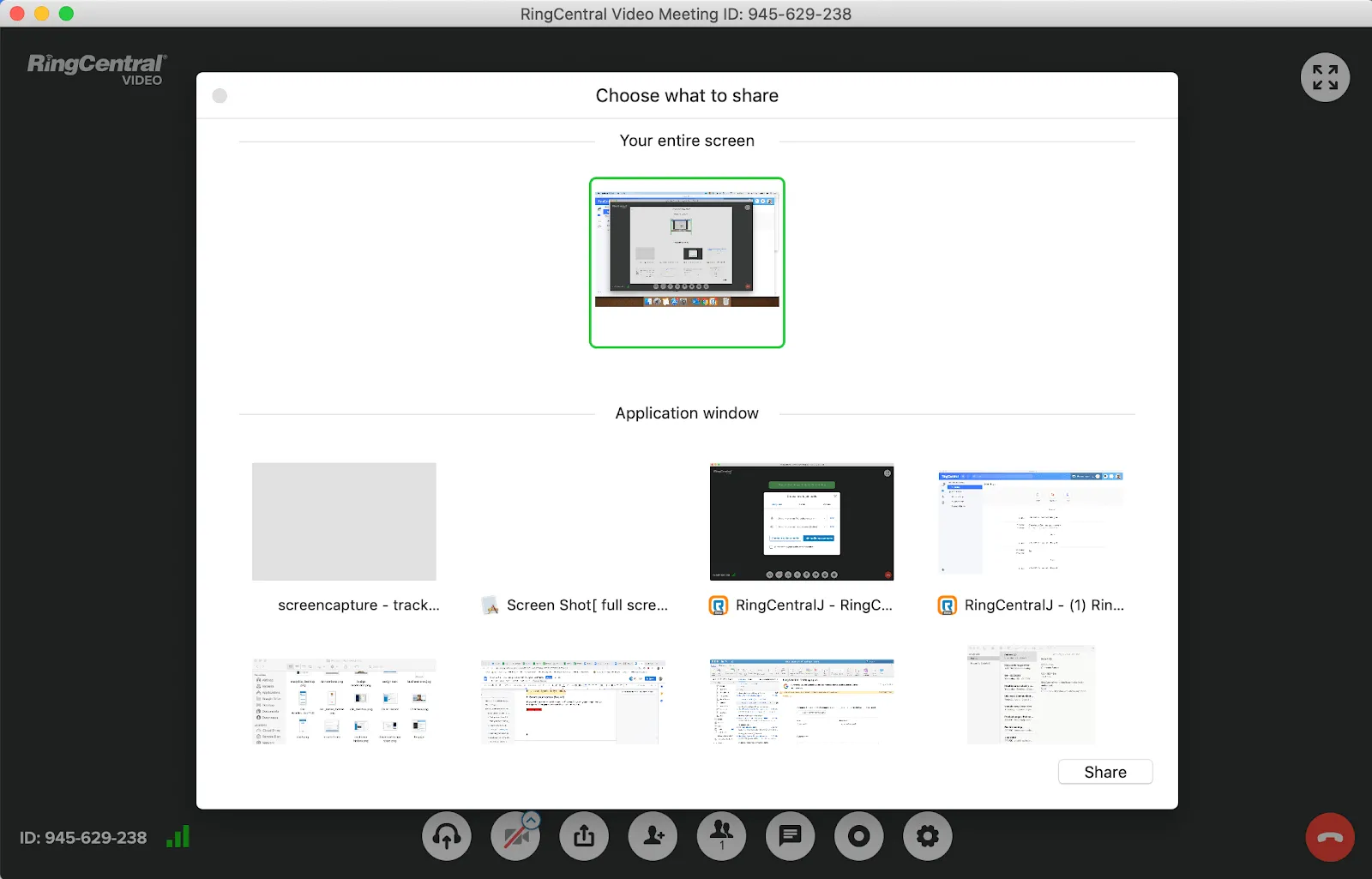

Conference calls are an easy and effective way to stay connected with your employees, even when you’re all working remotely. Even a short, free teleconference can help you keep track of team goals without having to physically meet up.
Of course, to make sure your meetings run smoothly, it’s important to use the best free conference call service. Read on to find out how you can choose the best solution for your business.
Is there a free conference call service?
Some providers (like RingCentral) offer unified communications solutions for a monthly subscription. Although not completely free, these plans come with thousands of toll-free minutes for your conference calls as well as other productivity features like single sign-on, dedicated conference lines, call recordings, and more.
But, you still need to have access to either an internet or phone connection to make calls. What is actually free is the conference call service itself.
Traditionally, conference call charges are determined by what kind of dial-in number is being used for the meeting. A dial-in number is a special telephone number that’s used to access a conference call. These numbers have 10-digits, with the first three representing the area code for the meeting.
There are two types of dial-in numbers:
Toll numbers
If the meeting host is using toll numbers, attendees who dial into the meeting will get charged. If they’re outside of the area code coverage, they’ll be charged long-distance fees as well.
Toll-free numbers
With toll-free conference call numbers, the meeting’s host is the one who shoulders the costs of the call. Attendees won’t have to pay to dial in to the call.
Two kinds of conference call services
Today, many conference call providers offer plans that bypass or limit these dial-in fees. They go about it in two ways:
Free service
Free conference call services offer pretty basic features, and may run into issues like poor call quality, hidden costs, a difficult dial-in process, and more. Small businesses that only need to do simple calls with fewer than 10 participants should be fine, but a larger business will probably need a better solution.
Paid service
Some providers (like RingCentral) offer unified communications solutions for a monthly subscription, and conference calls are just one part of many of their subscription plans. Although not completely free, you’ll get thousands of toll-free minutes and permanent toll-free numbers for your users.
Paid conference calls also offer other useful features like single sign-on, dedicated conference lines, call recordings, and more. These customization options and productivity tools tend to be useful if you work at a larger organization with more requirements, like security, for instance.
Are paid conference call services worth checking out?
Having free conferencing tools is always nice, but can they compare to a paid service? If we’re only talking about the bare minimum features needed to make a conference call, then free services are as good as paid ones.
Here’s a comparison of the usual differences between paid and free plans:
Free |
Paid |
|
|---|---|---|
Platform |
Multi-platform |
Multi-platform |
Quality |
Inconsistent, sometimes poor |
Generally high-quality |
Number of users |
Limited |
Unlimited |
Cost |
None |
Monthly or annual subscription. Costs typically start from $20 per month depending on the plan |
Features |
Limited. Most services only offer simple conference calling |
Offers more productivity tools like screen sharing, recording, etc. |
What are the best free conference call services?
What do you need to consider before choosing a service provider?
First, look at your needs as a business. Do you have a lot of employees? Do you need video conferencing features? Once you figure out what features you will need with conference calls, then you can start looking for conference call services.
You want an internet phone service provider that can support all of your needs, especially if you’re growing. (If you can’t find one, then choose the one that offers the features that you need the most.)
Remember that what’s best for one business may not be the best for you, so choose the one that you think will help make your team work together better.
Choosing a conference call provider
The four main factors that you need to look at when choosing a provider are:
Number of users
If you’re hosting a meeting with a large number of people, you need to check how many participants the meeting can support. Some no-cost conferences limit the number of attendees, so choose one that can accommodate your entire team.
Features
Do you need to share your screen or record your call? Certain features are only available for paid plans, and these vary from provider to provider.
One provider might offer screen sharing for free, but not call recording. Another provider might offer the opposite (free call recordings, add-on fees for screen share).
Quality
In general, call quality is dependent on your internet or phone connection, but, you still have to make sure that your provider has good video and audio quality, as well as a stable app to support that connection.
Costs
It may seem weird to talk about conference call costs, but some of these services do come with hidden costs. For example, some of them use toll numbers, which means that participants on the call still get charged when they dial in.
For most conferencing tools that offer a free service, the cost is charged through your phone or internet bill, making the tools technically free. Just be wary of hidden charges when you’re using these tools.

Should you choose audio or video conferencing?
It’s also good to know if you need audio or video calling for your business meetings. Most conference call providers offer both, but keep in mind that a video conference has more hardware requirements.
Both conferencing types have their pros and cons.
Here’s an overview of their differences:
Audio |
Video |
|
|---|---|---|
Supported devices |
|
|
Quality |
|
|
Multimedia support |
|
|
Participation |
|
|
Meeting capacity |
|
|
Audio conference
The main benefit of sticking with pure audio is its accessibility. You can join meetings from a desk phone, a computer, or your mobile phone. As long as you have the dial-in number, you can join using pretty much any device.
Unfortunately, this means you won’t be able to use visual aids for your meeting, which can lead to communication problems. So if there’s something you need to present visually, then an audio conference is definitely not enough.

Video conference
Video calls need a camera, so you’ll need to use either a computer or a mobile phone. The benefit is of course that you have access to multimedia features and visual aids. For instance, you can use screen sharing to make it easier for your team to point out certain notes in a document that you’re going through together:

Screen sharing in RingCentral Video’s desktop app
Are there any limits to free conference calls?
Free conference call services usually come with limitations. Typically, they’re limited by the number of people who can join a call and how long your meetings can be. For example, some solutions let you have only up to 20-30 people in a call at a given time.
All in all, despite the limitations to free teleconferencing, it’s still pretty useful overall, especially if you’re just trying different options out to see what your business needs.
How can I get free teleconference services?
There is a huge number of free conference call providers out there. As we mentioned, using a paid conference service is still generally the better choice if you’re using it for business.
But we get it, having a free option can still be useful. Once you’ve taken into consideration the tips above to choose the best option for your team, it’s time to try hosting a free call.
How to host a conference call
Hosting a conference call is pretty easy. You can host one through the internet or using your landline.
Here are the general steps to host a free online meeting:
- Sign up for an account
Signing up for a conferencing account is as easy as signing up for any other website. Usually, all you’ll need is a valid email address to create an account. - Install the required software
Most providers have a dedicated app where you can host your meetings. Download and install the app. - Connect to the meeting with dial-in numbers
If you’re the host, you’ll be given a dial-in number which you can share with your team. As long as the meeting participants have your dial-in number and access code, they’ll be able to join your meeting.
If you don’t have an internet connection (or if you just prefer to use landlines), you can still host conference calls using your desk phone. First, you still need to sign up for an account to get a dial-in number.
Once you have your dial-in number, here’s how to start hosting:
- Share the dial-in number with the meeting participants
You can do this however you want. Common methods are through emails and chat. However you choose to do it, the important thing is that the participants know that dial-in number so that they can access the call. - Input the dial-in number, followed by the access code and PIN
When you’re ready to start the conference, input the dial-in number into your desk phone. You’ll be prompted to input the access code and host PIN as well. Once that’s done, the conference call has begun and you can now wait for others to join in. - Use phone keypad commands to manage the call
Your keypad acts as a command console for controlling the call. There are commands for muting yourself, locking the conference, recording, etc. If you can’t memorize all commands, just take note of the keypad button that shows a list of available instructions.
Choose the best conference call for your business
There’s no such thing as “one size fits all” when it comes to calling solutions. Some features may not be important to some businesses but are critical to others. It’s important to know what you need for your own team to find the one that’s best for you.
Keep in mind as well that you don’t have to limit yourself to a free service. Sure, cutting costs is a great thing; but don’t compromise the productivity and efficiency of your team just to save money.
Plus, if you choose a good service that can do multiple things well, you could even consolidate the number of apps and software you’re using. This way, you only have to pay for one tool every month as opposed to three or four.